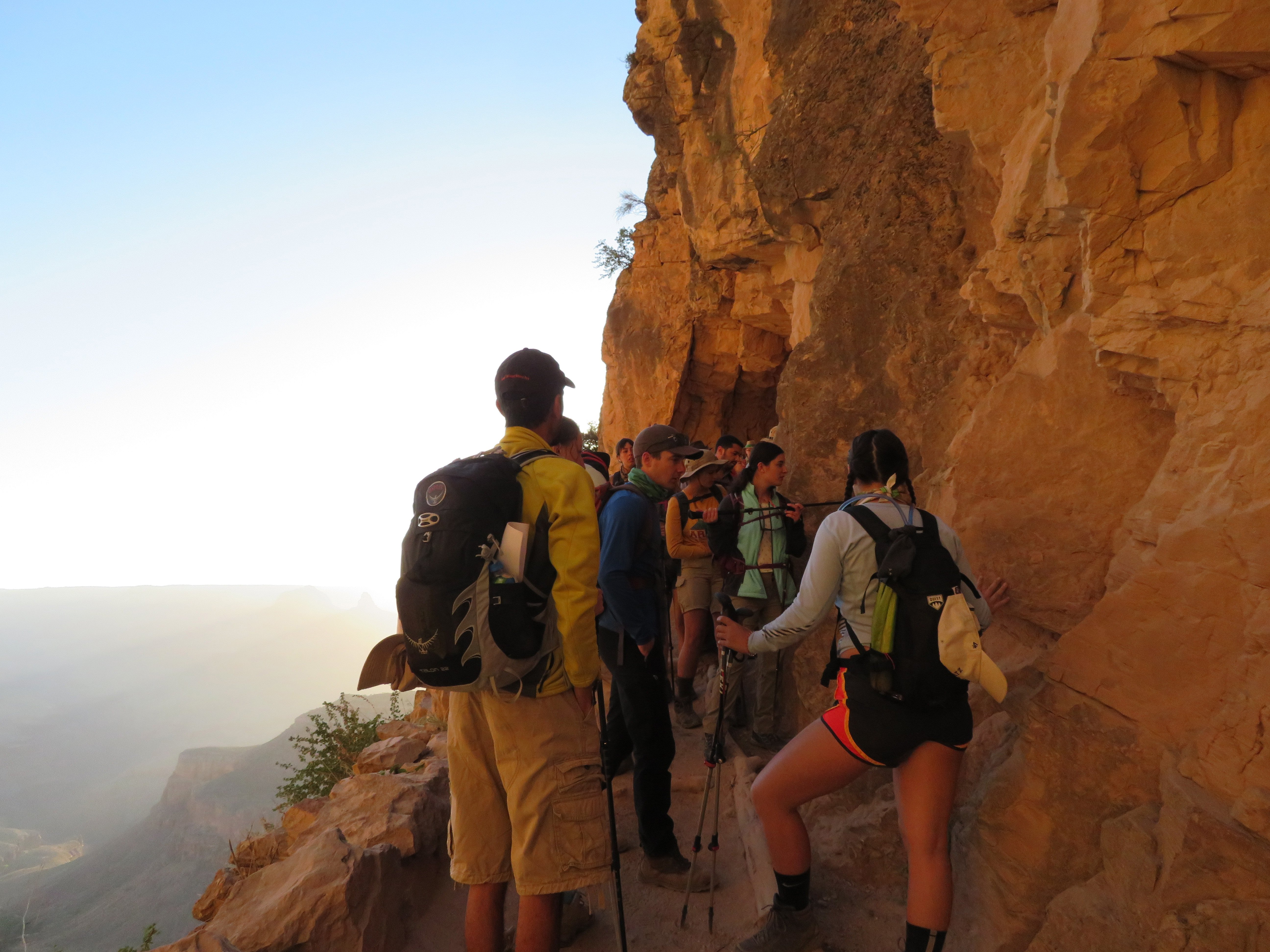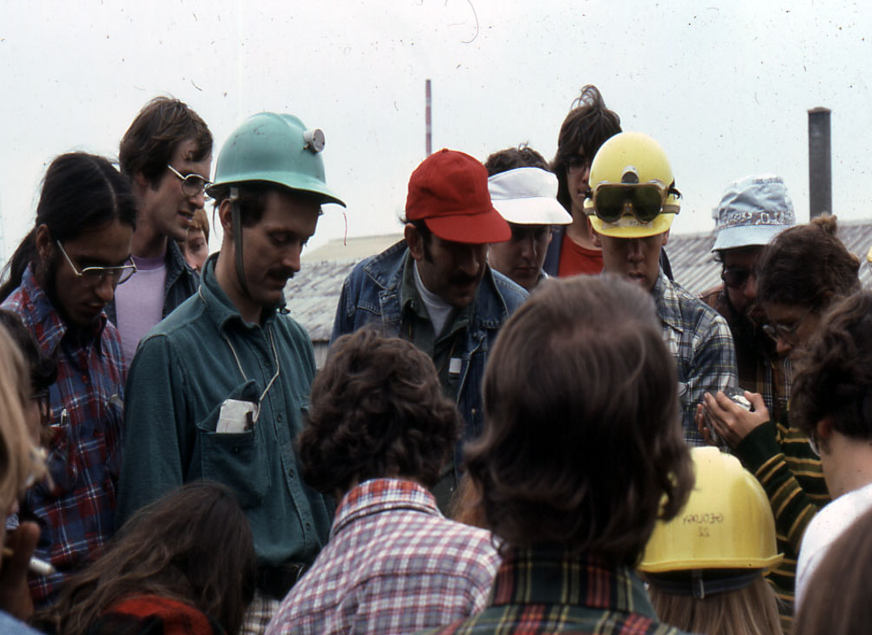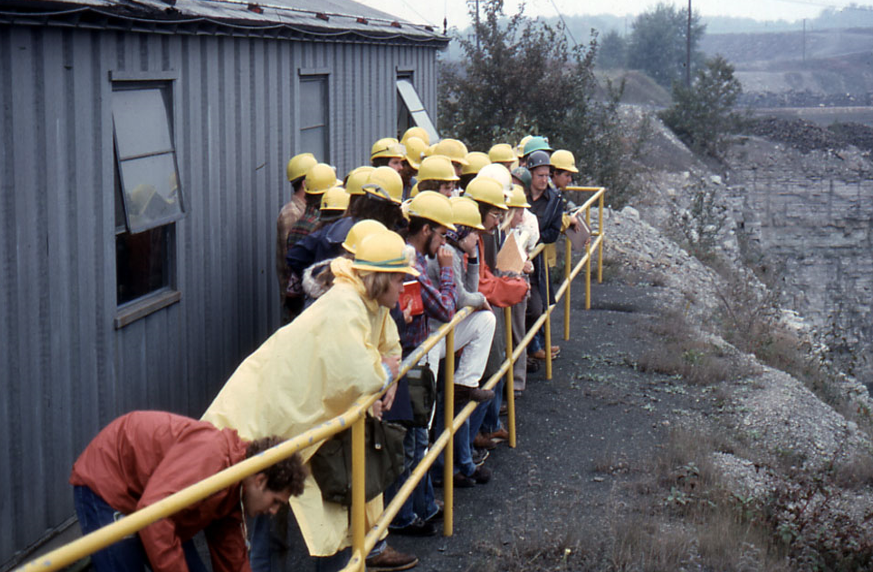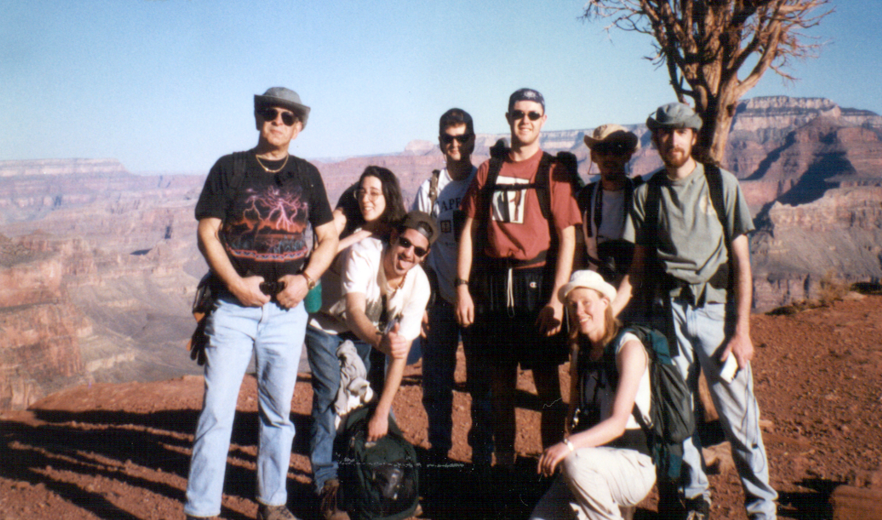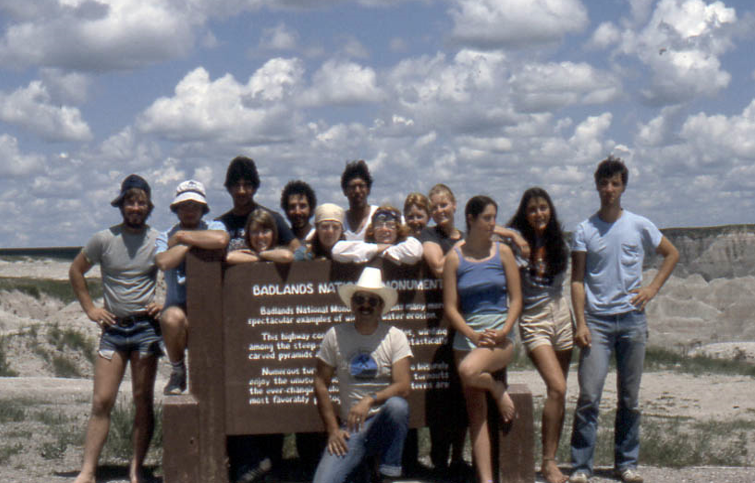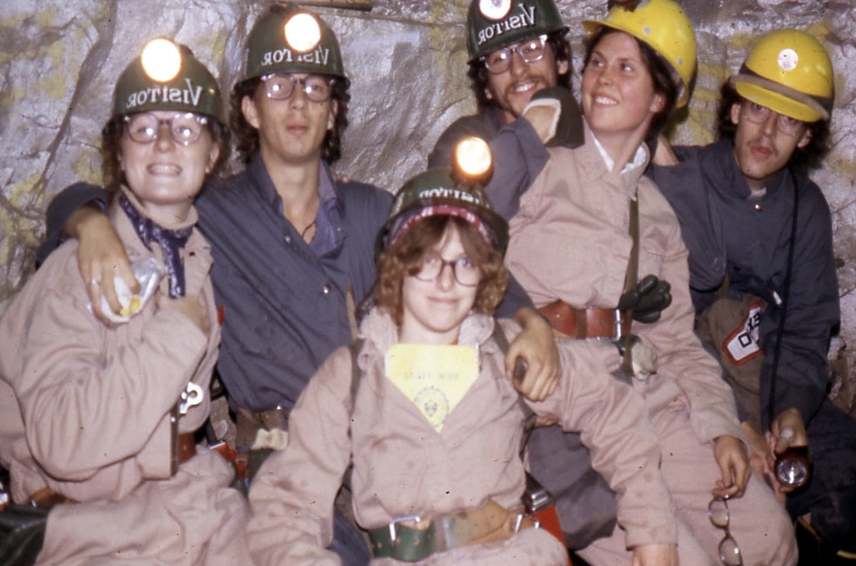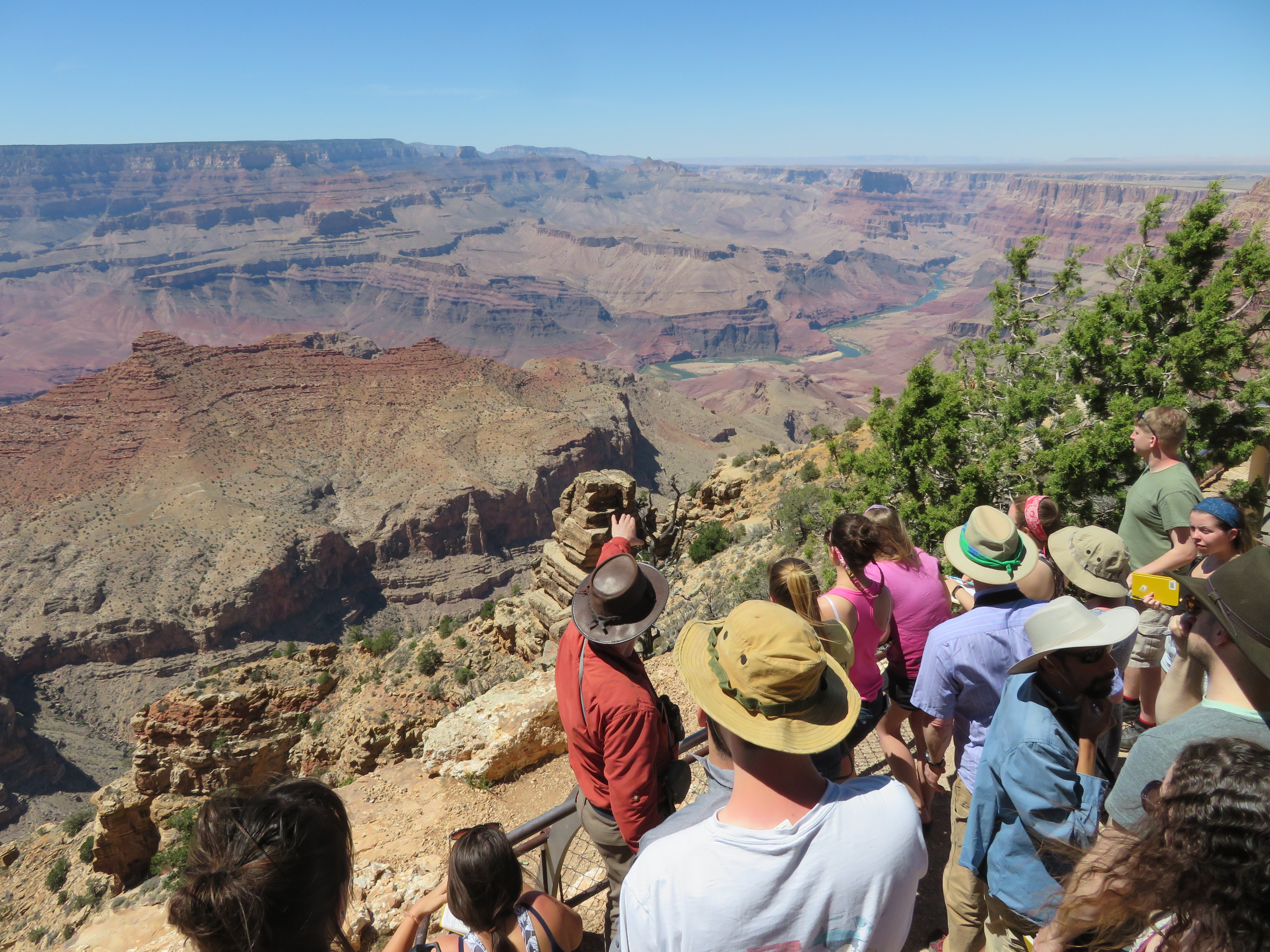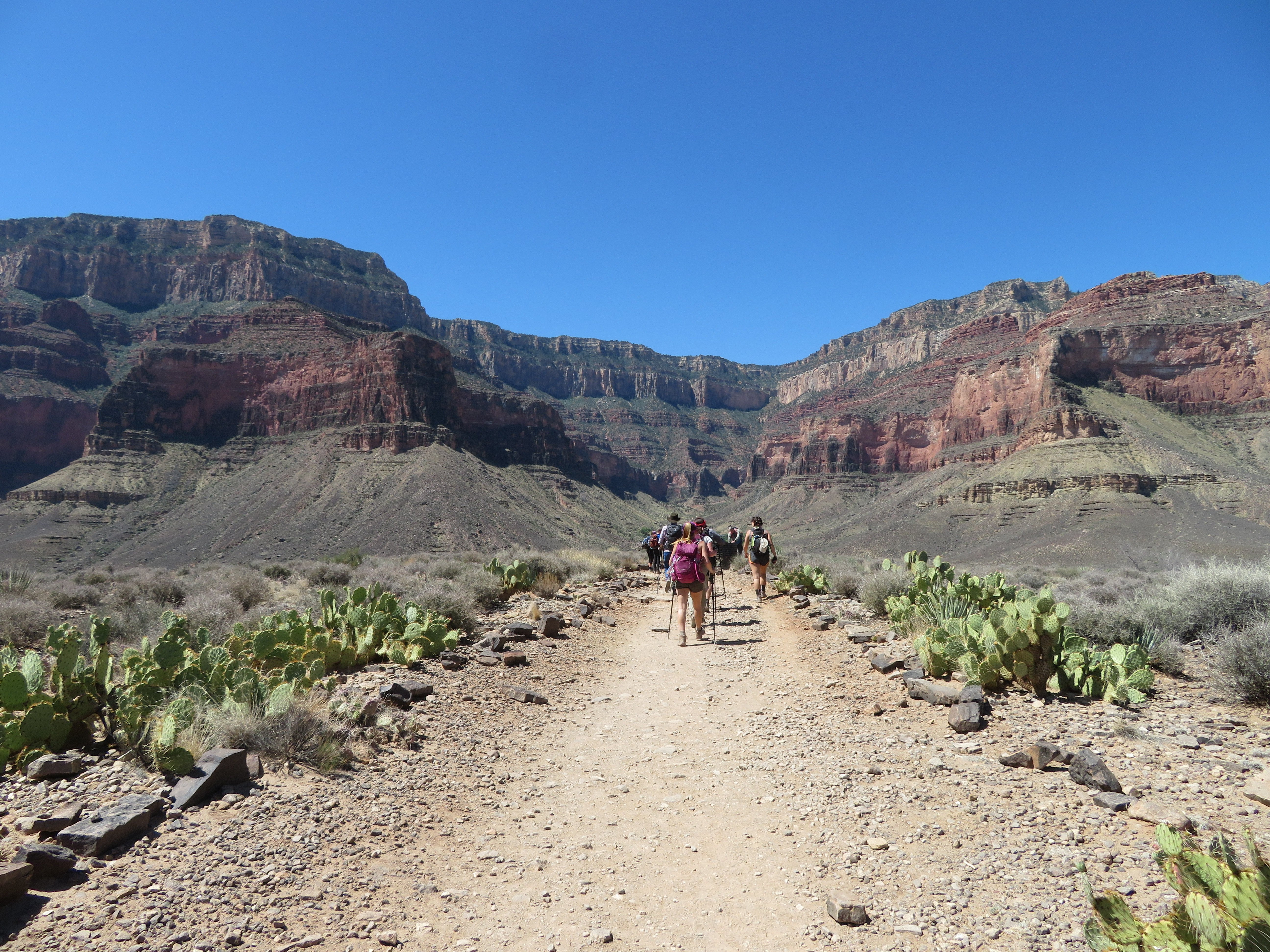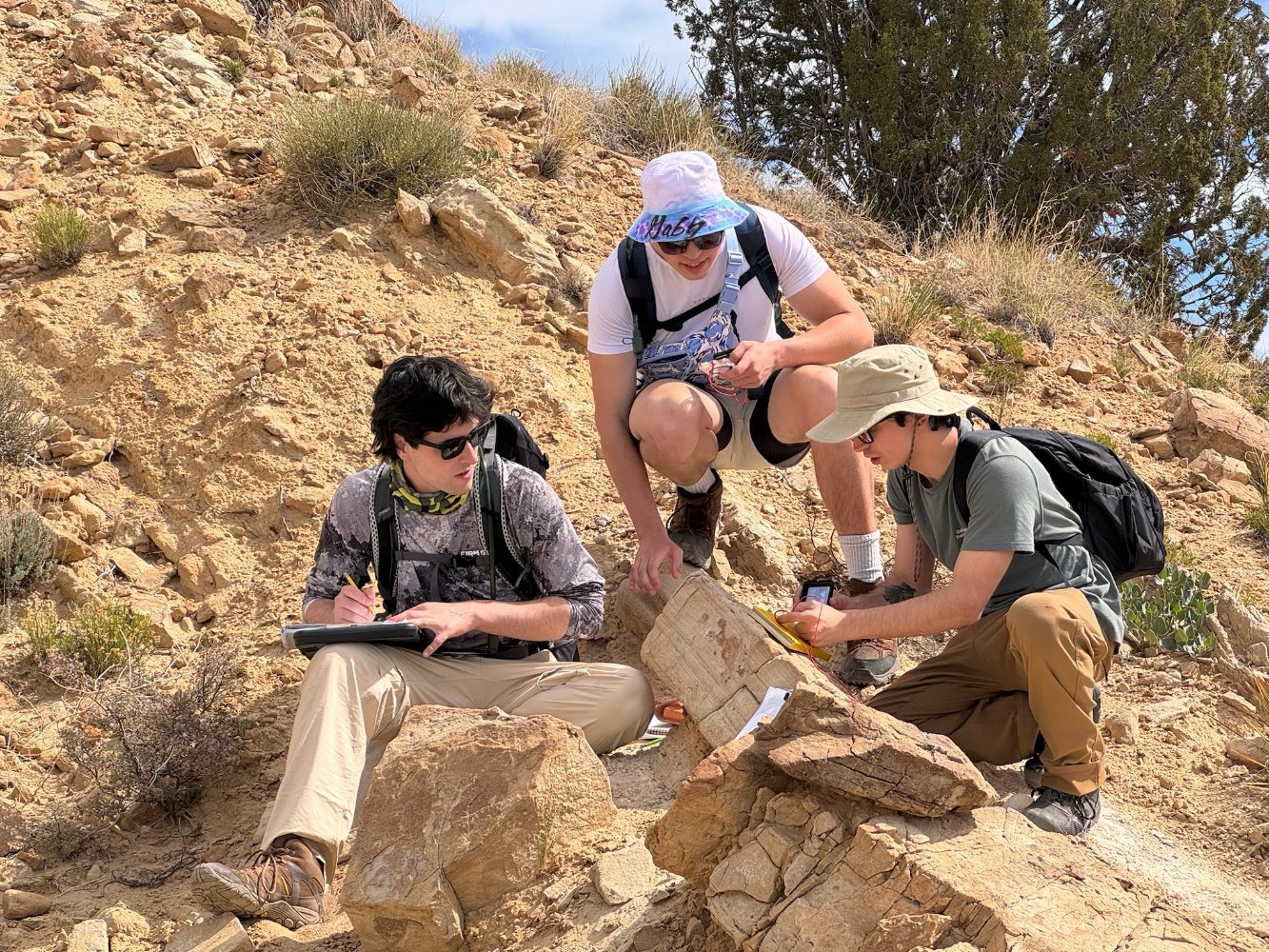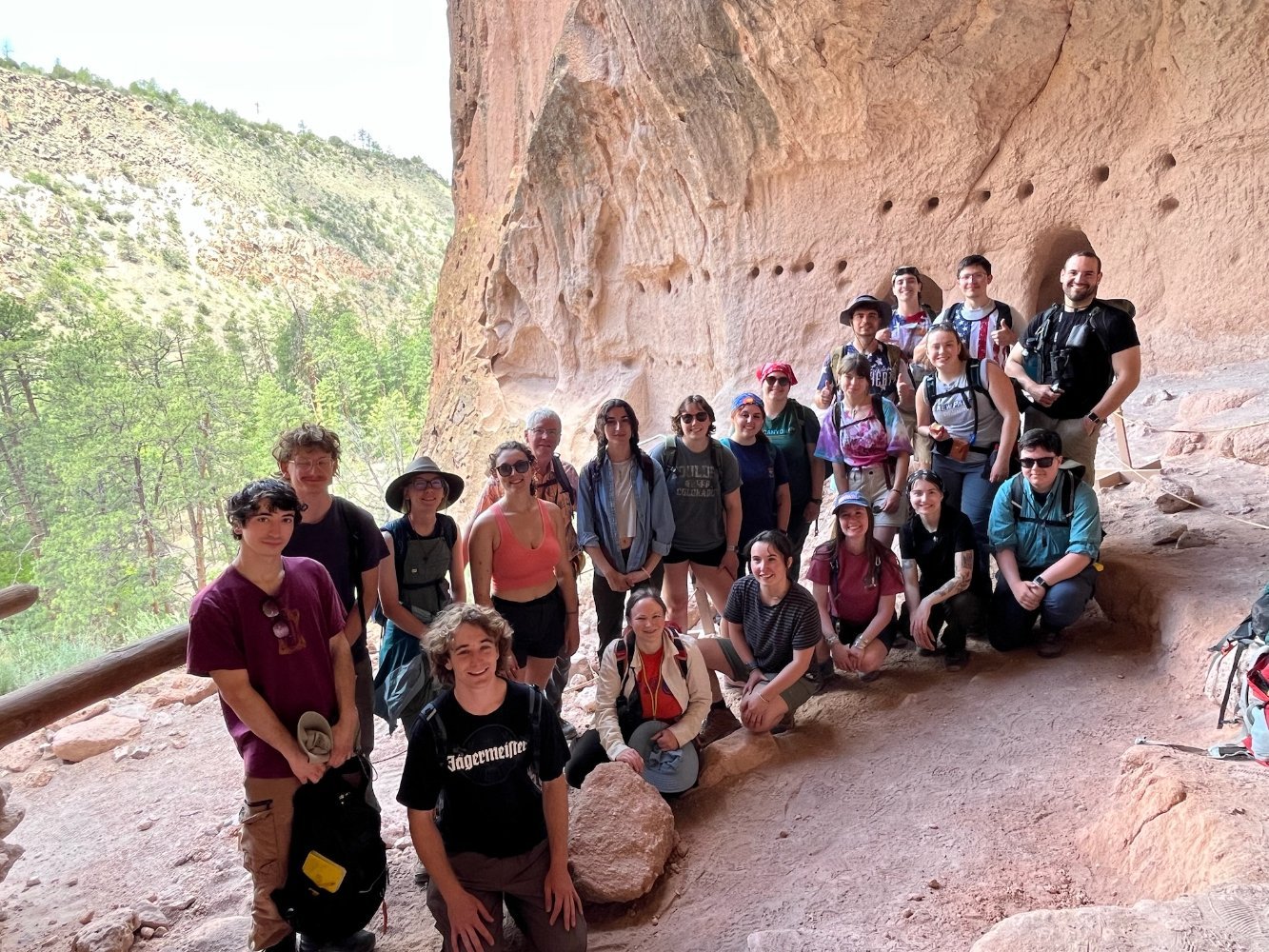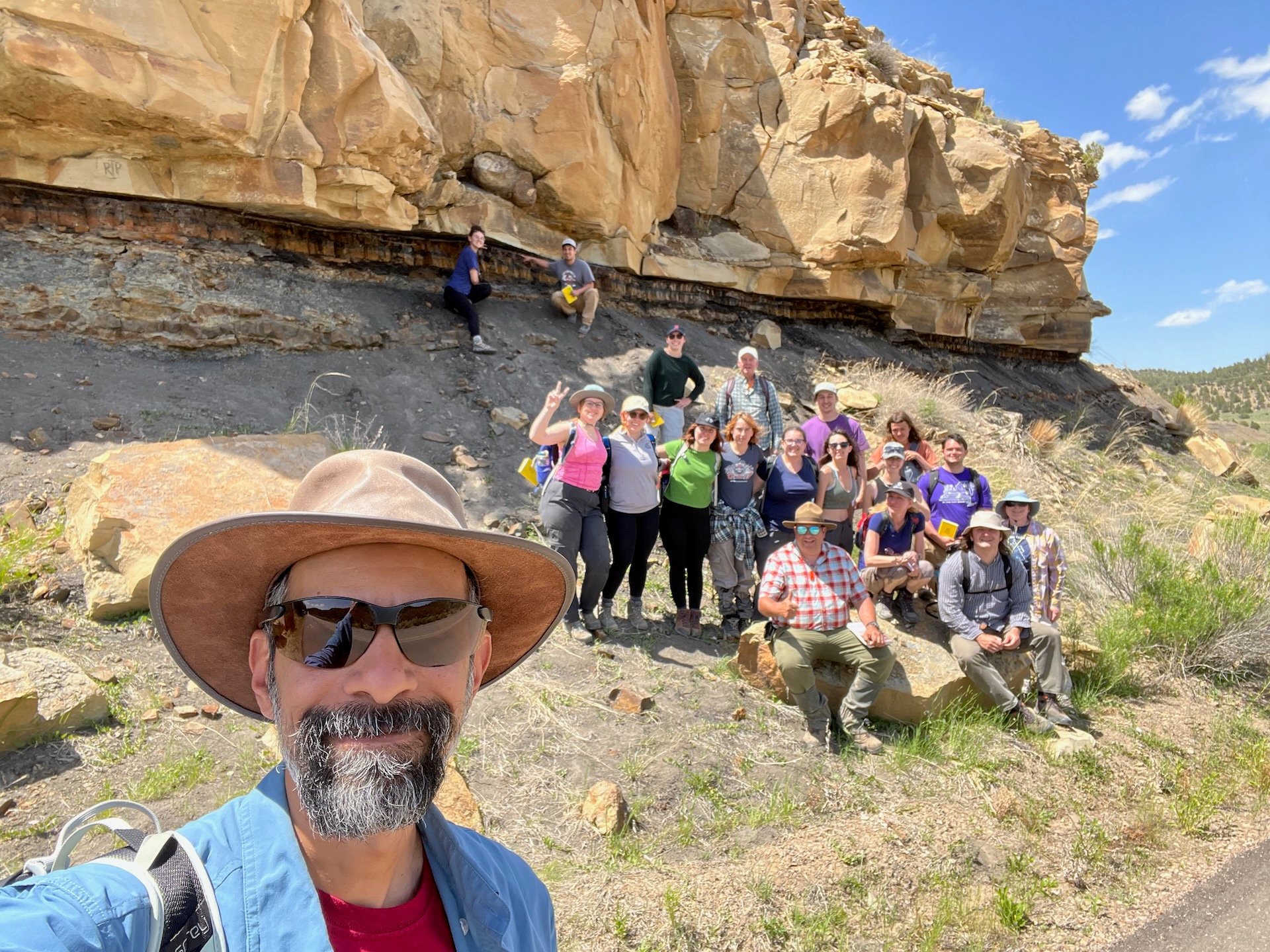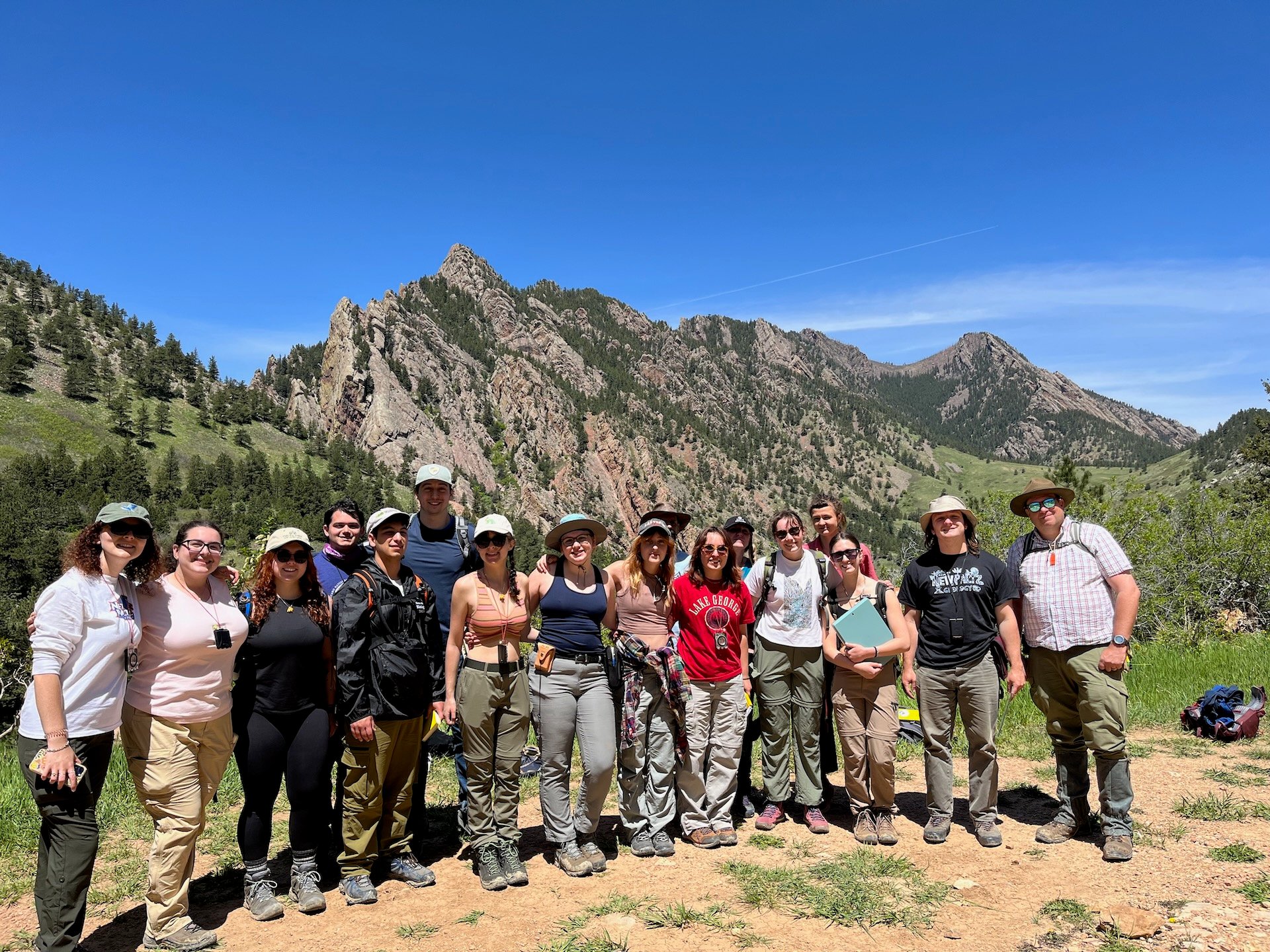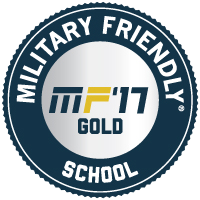From sandstone to success: The lasting impact of a Geology field trip
Let's rewind to the 70s.
SUNY New Paltz Geology students are heading out for one of their biggest field trips yet. Bags are packed and camping gear is stuffed in a van that will soon cross hundreds of miles of the country. Gas is 36 cents a gallon, Bob Dylan plays on the radio, and national parks don’t need online reservations.
For some, it was their first time outside the tri-state area. For others, it deepened lifelong curiosity. But for everyone, it was a transformative learning experience and a chance to cross into the American West and come face to face with towering cliffs and ancient rock formations. Decades later, it remains one of the most vivid memories from their time at New Paltz.
That trip, which was made with the help of Dr. Steven Egemeir, continued and expanded through Dr. Martin Rutstein, commonly referred to as “Doc,” and created an (almost) annual opportunity for more Geology students to see topics in a textbook come to life. Whether you’re a Geology alumnus from the 70s or just graduated within the past few years, the trip had an overarching impact. Students met people they went on to marry, overcame personal challenges, and clarified career paths post-grad.
The trip’s mission hasn’t changed, only the logistics. Today, students board planes instead of vans, sleep in hotels instead of tents, and stream Spotify instead of turning the radio dial.
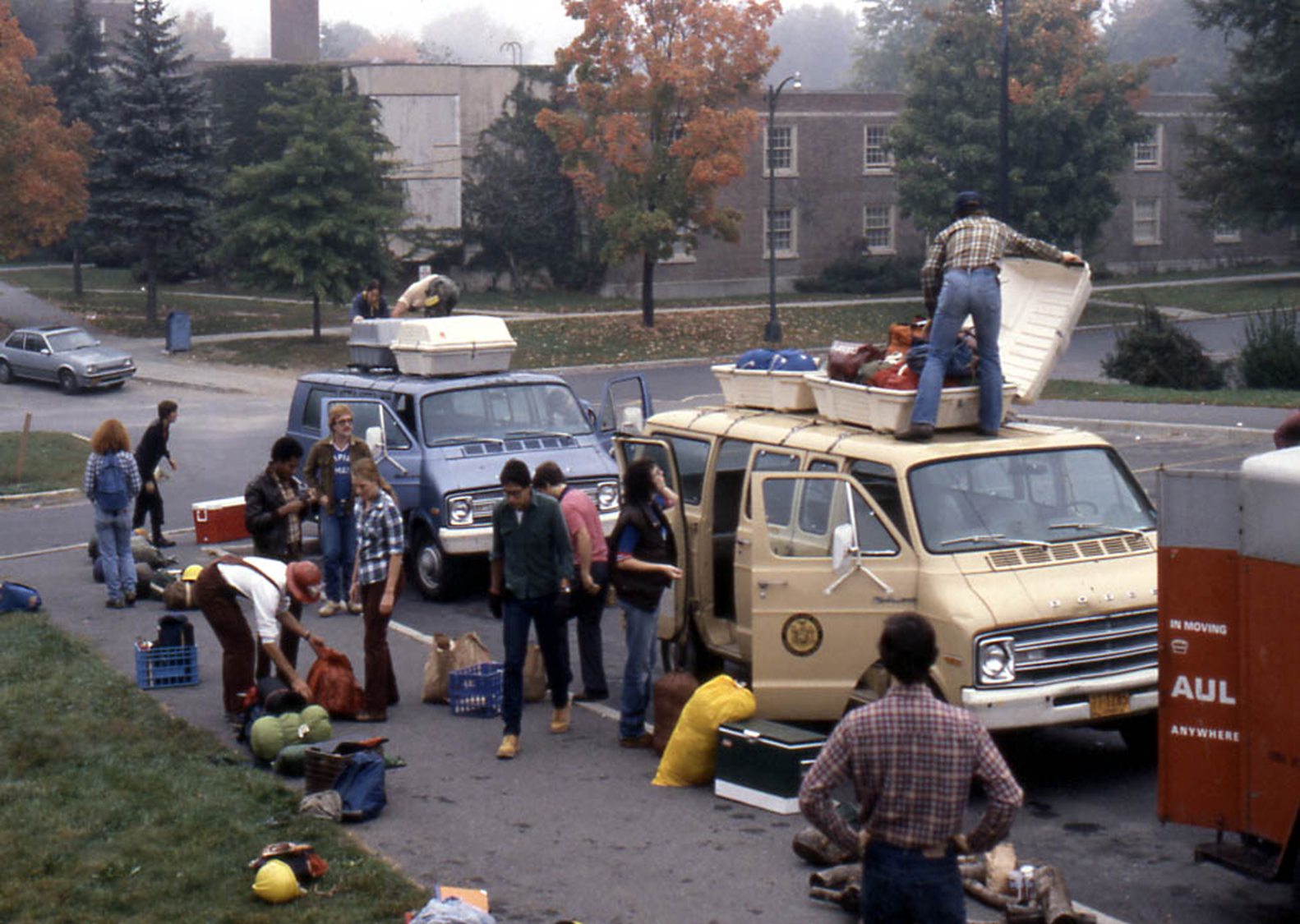
The necessary upgrades to the trip year over year help ensure that it’s still possible for students to enjoy themselves, while also following SUNY protocols. To keep costs low for students, donor support through the SUNY New Paltz Foundation holds significant importance. In addition to the Geology Undergraduate Field Trip Fund and the Geology Alumni Endowed Field Trip Fund, which provides lodging funds, the department is able to further support students of geology through the Professor Martin “Doc” Rutstein Endowed Scholarship, the Drew R. and Donna T. Goodbread Geology Scholarship, and the Milton “Sparky” Garrison Memorial Endowed Scholarship.
"I always believed in the value of field trips,” said Rutstein, who was a professor in the department for 44 years. “In Geology, the story is in the rock. The more you see these things, the more you pack into your experience bank. You can talk about these places and show movies, but when you go out there and stand on the Grand Canyon, especially after hiking 21 miles in a single day, it’s something else.”
Dr. Jamie MacDonald '98 (Geology) has gone on to take what he’s learned from the importance of field trips and apply it to his own students in his role as a Geology Professor at Florida Gulf Coast University. MacDonald attended the trip three times in the late 90s, each time to the Colorado Plateau, which Rutstein was heavily interested in.
"It really built strong connections between the students,” said MacDonald. “We felt like we were not individual students in class, but a group of students moving through a program together.”
MacDonald remains in touch with friends from that cohort, and he says that it was rooted in learning together. The things that they learned in the classroom were amplified and put into real context when students went on this field trip.
In a geology textbook, the Colorado Plateau is a tidy diagram, with layers labeled “Kaibab Limestone” or “Navajo Sandstone,” and neat arrows pointing to tectonic uplift or ancient seas. But in real life, it's a jaw-dropping expanse of crimson cliffs, slot canyons carved by flash floods and silent stone arches formed over millions of years. What reads like a timeline in a textbook becomes an overwhelming sensory experience: the heat radiating off red rock, the scent of desert sage, the echo of your footsteps in a canyon that was once the floor of an ancient ocean.
"You came out of the experience more as a Geology student rather than just a student who studies Geology,” said MacDonald. “It helped reinforce I made the right choice in my major.”
Since 2015, the torch has been passed on to Geology Professor Kaustubh Patwardhan, known as KP, to lead the trips. Today, the Geology department supports a cohort of approximately 20 students on the trip out west to explore sites in New Mexico, Colorado, and Arizona. And that’s not for a lack of student interest, actually it's quite opposite – “at the end of every trip, even before our return to campus, students are eager to know the plan for next year’s trip”, said Patwardhan. Every year the trip is announced, Geology students rush to the sign-up sheet to secure one of the limited spots available.
“The west trips are a unique opportunity for our students not only to expand their geologic knowledge but also to experience a new part of the country and its culture and perhaps gain a different life perspective,” said Patwardhan. While costs for travel have risen in recent years, the department hopes to continue these annual trips and venture to new sites by securing additional financial resources and support in the years ahead.
"The earnings of the endowed fund are now positively impacting the kids who want to go on these field trips,” said David Korzendorfer '75 (Geology). “It’s open to anybody who feels similarly to the way we feel and wants to help build that fund. Expenses are a lot higher than they were when we did it. We took our own cars, we camped, we made our own meals, taking turns cooking. Our field trip was on a shoestring budget.”
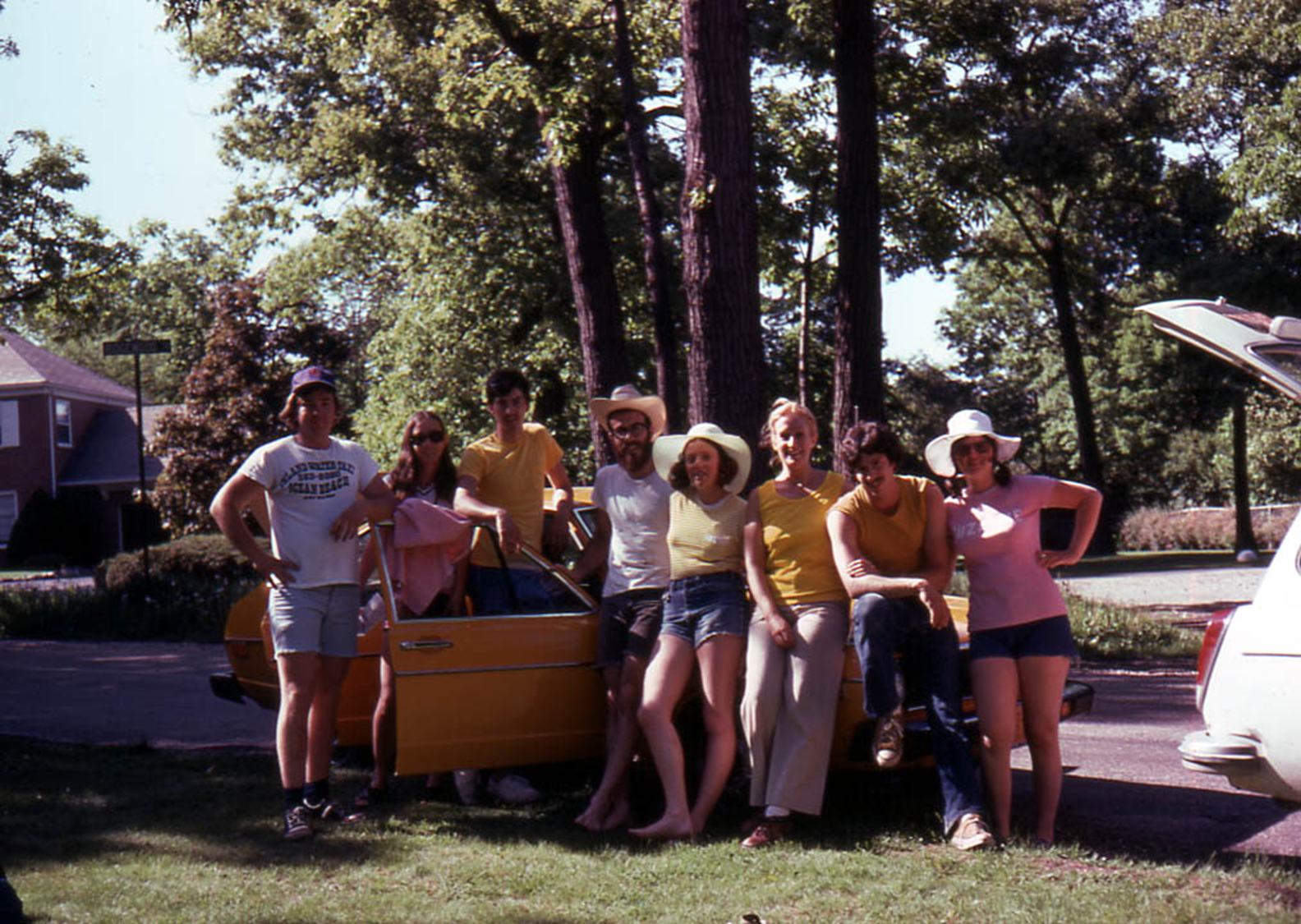
David met his wife Barbara (Frank) Korzendorfer '75 (Geology) on the 1975 trip, which was three weeks over the summer, visiting multiple places throughout the country including the Badlands, Yellowstone, and the Grand Canyon. During that time, their class only had eight people.
But the cap on this trip doesn’t mean that Geology students are barred from the field trip experience entirely. The department continues to offer local weekend field trips around the Hudson Valley and the Catskills, and regional overnight trips to locations in upstate New York, Central Pennsylvania, and Acadia National Park, Maine, where they hop in the department vans named according to the geologic eras: Paleozoic, Mesozoic, Cenozoic.
All of these field trips combined remain attractive to potential students considering studying Geology at the University. For example, Kyle Dayton ’19 (Geology) only applied to New Paltz because of the Geology Department and “how enthusiastic and awesome the Geology professors were.”
The trips involved early morning to late night field work, with students mapping rocks, working in small groups, and getting hands-on experience with different geological environments.
“We would go out early in the morning and not come back until late at night and just be covered in dust and dirt,” said Dayton. “But that was sort of the excitement of it, of we are going out and touching these rocks, physically seeing these rocks."
In Arizona, they visited a cinder cone volcano, the Grand Canyon, where they walked through and identified different rock units they had studied in class, and saw the Barringer crater, one of the largest meteor craters in the world.
Dayton went on to briefly work at the American Museum of Natural History, and has since continued in the field, successfully defending her Ph.D. in Geochemistry at Cornell University this past spring.
“These field trips give rise to really good Geology graduates who went on and did great work,” said Rutstein.

